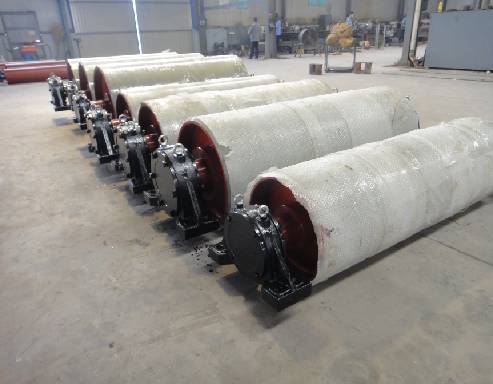 Afrikaans
Afrikaans  Albanian
Albanian  Amharic
Amharic  Arabic
Arabic  Armenian
Armenian  Azerbaijani
Azerbaijani  Basque
Basque  Belarusian
Belarusian  Bengali
Bengali  Bosnian
Bosnian  Bulgarian
Bulgarian  Catalan
Catalan  Cebuano
Cebuano  Corsican
Corsican  Croatian
Croatian  Czech
Czech  Danish
Danish  Dutch
Dutch  English
English  Esperanto
Esperanto  Estonian
Estonian  Finnish
Finnish  French
French  Frisian
Frisian  Galician
Galician  Georgian
Georgian  German
German  Greek
Greek  Gujarati
Gujarati  Haitian Creole
Haitian Creole  hausa
hausa  hawaiian
hawaiian  Hebrew
Hebrew  Hindi
Hindi  Miao
Miao  Hungarian
Hungarian  Icelandic
Icelandic  igbo
igbo  Indonesian
Indonesian  irish
irish  Italian
Italian  Japanese
Japanese  Javanese
Javanese  Kannada
Kannada  kazakh
kazakh  Khmer
Khmer  Rwandese
Rwandese  Korean
Korean  Kurdish
Kurdish  Kyrgyz
Kyrgyz  Lao
Lao  Latin
Latin  Latvian
Latvian  Lithuanian
Lithuanian  Luxembourgish
Luxembourgish  Macedonian
Macedonian  Malgashi
Malgashi  Malay
Malay  Malayalam
Malayalam  Maltese
Maltese  Maori
Maori  Marathi
Marathi  Mongolian
Mongolian  Myanmar
Myanmar  Nepali
Nepali  Norwegian
Norwegian  Norwegian
Norwegian  Occitan
Occitan  Pashto
Pashto  Persian
Persian  Polish
Polish  Portuguese
Portuguese  Punjabi
Punjabi  Romanian
Romanian  Russian
Russian  Samoan
Samoan  Scottish Gaelic
Scottish Gaelic  Serbian
Serbian  Sesotho
Sesotho  Shona
Shona  Sindhi
Sindhi  Sinhala
Sinhala  Slovak
Slovak  Slovenian
Slovenian  Somali
Somali  Spanish
Spanish  Sundanese
Sundanese  Swahili
Swahili  Swedish
Swedish  Tagalog
Tagalog  Tajik
Tajik  Tamil
Tamil  Tatar
Tatar  Telugu
Telugu  Thai
Thai  Turkish
Turkish  Turkmen
Turkmen  Ukrainian
Ukrainian  Urdu
Urdu  Uighur
Uighur  Uzbek
Uzbek  Vietnamese
Vietnamese  Welsh
Welsh  Bantu
Bantu  Yiddish
Yiddish  Yoruba
Yoruba  Zulu
Zulu Understanding the Components and Functions of a Take-Up Pulley System
The Mechanics of Take-Up Pulleys An Essential Component in Conveyor Systems
In the world of industrial machinery and material handling systems, efficiency is key to ensuring smooth operations. One critical component that greatly contributes to this efficiency is the take-up pulley. Understanding the functionality and importance of take-up pulleys is essential for anyone involved in the design, operation, or maintenance of conveyor systems.
What is a Take-Up Pulley?
A take-up pulley is a component of a conveyor belt system that serves multiple purposes. Primarily, it is designed to maintain tension in the belt, ensuring that it runs smoothly over the pulleys without slipping or leading to excessive wear and tear. By keeping the belt taut, take-up pulleys help to minimize friction and reduce the risk of damage, which can lead to costly downtime and repairs.
The take-up pulley is typically located at one end of the conveyor system and is adjustable. Through various mechanisms, such as screw adjustments or hydraulic systems, operators can adjust the position of the pulley to either increase or decrease tension in the belt. This adjustment capability is crucial because conveyor belts can stretch over time due to regular use or if they experience an overload of materials.
The Importance of Tension
Proper tensioning of the conveyor belt is vital for optimal system functioning. If the belt is too loose, it can slip off the pulleys, leading to a halt in operations and potential damage to the belt and other components. Conversely, if the belt is too tight, it can cause excess wear on the motor that drives the conveyor, requiring more energy and potentially leading to overheating or failure.
Maintaining the correct tension through the use of a take-up pulley ensures that the forces acting on the belt are balanced. This not only enhances the life expectancy of the belt but also contributes to energy efficiency. As all operators are aware, energy costs can significantly impact the overall operating expenses, making this efficiency all the more important.
take up pulley

Types of Take-Up Pulleys
There are several types of take-up pulleys used in various conveyor systems, depending on the specific application and requirements. The most common types include
1. Gravity Take-Up This system uses weight to maintain belt tension, allowing for automatic adjustments as the belt stretches. It is simple and effective for many applications.
2. Screw Take-Up Utilizing a threaded rod, this type of take-up pulley allows for manual adjustment of the tension. Operators can easily increase or decrease tension during routine maintenance.
3. Hydraulic Take-Up More advanced systems may use hydraulic mechanisms to adjust tension automatically, allowing for fine-tuning without manual intervention. This can be particularly useful in systems experiencing high variability in load or speed.
Maintenance Considerations
Regular maintenance of take-up pulleys is essential for the longevity and performance of conveyor systems. Operators should routinely inspect the pulley for wear or signs of misalignment, which can negatively affect belt tension. Lubrication of moving parts is also crucial to prevent unnecessary wear and ensure smooth operation.
In summary, take-up pulleys play a significant role in the functionality of conveyor systems, ensuring that belts maintain proper tension and operate efficiently. By understanding the various types of take-up pulleys and their importance, industrial operations can optimize their material handling processes, improve energy efficiency, and reduce downtime, leading to improved productivity and cost savings. Implementing a robust maintenance schedule for these essential components will further enhance system reliability and performance.
-
Revolutionizing Conveyor Reliability with Advanced Rubber Lagging PulleysNewsJul.22,2025
-
Powering Precision and Durability with Expert Manufacturers of Conveyor ComponentsNewsJul.22,2025
-
Optimizing Conveyor Systems with Advanced Conveyor AccessoriesNewsJul.22,2025
-
Maximize Conveyor Efficiency with Quality Conveyor Idler PulleysNewsJul.22,2025
-
Future-Proof Your Conveyor System with High-Performance Polyurethane RollerNewsJul.22,2025
-
Driving Efficiency Forward with Quality Idlers and RollersNewsJul.22,2025





























